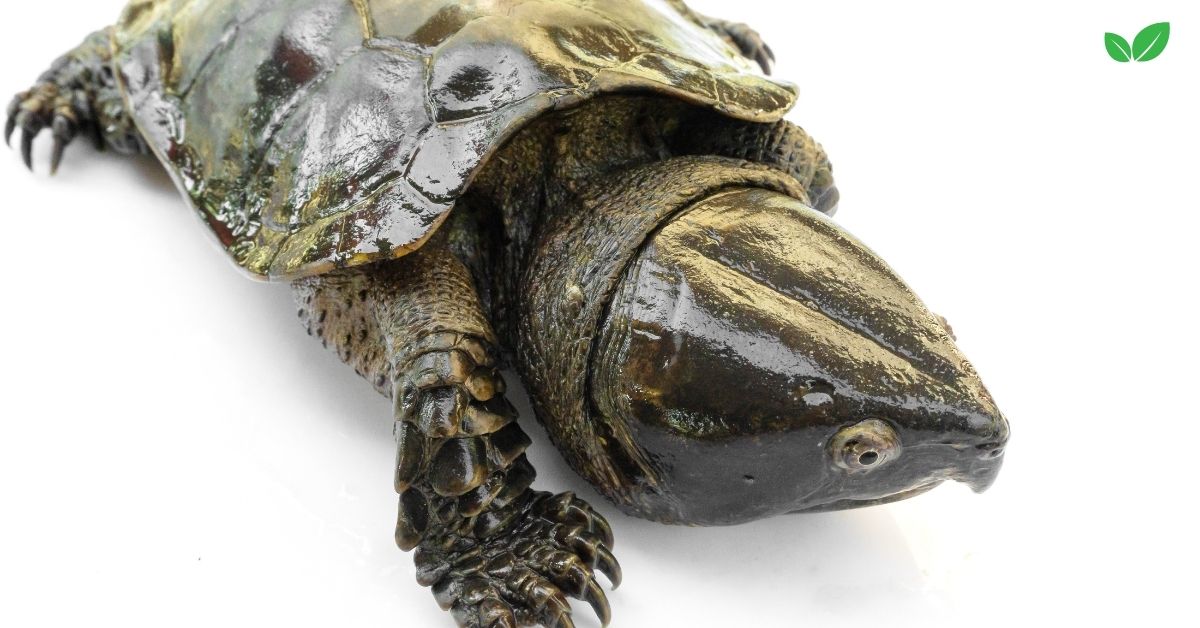Introduction
The big headed turtle (Platysternon megacephalum), an aquatic species native to Southeast Asia, is one of the most unique and intriguing reptiles on the planet. With its disproportionately large head, elongated tail, and distinct habitat requirements, this turtle stands out among freshwater species. Unlike other turtles, the big headed turtle cannot retract its head into its shell, relying instead on a bony skull for protection. Its specialized behaviors, ecological role, and vulnerability to human-induced threats make it a key focus for conservation efforts.
This article dives deep into the environmental niche of the big headed turtle, exploring its habitat, diet, behaviors, adaptations, ecological contributions, and the conservation challenges it faces. By understanding the importance of this remarkable species, we can better appreciate the intricate web of life it helps sustain and the urgent need to protect it.
Physical Characteristics of the Big Headed Turtle
The big headed turtle is one of the most anatomically distinct members of the reptilian world. Its adaptations are perfectly suited to its niche in fast-flowing mountain streams.
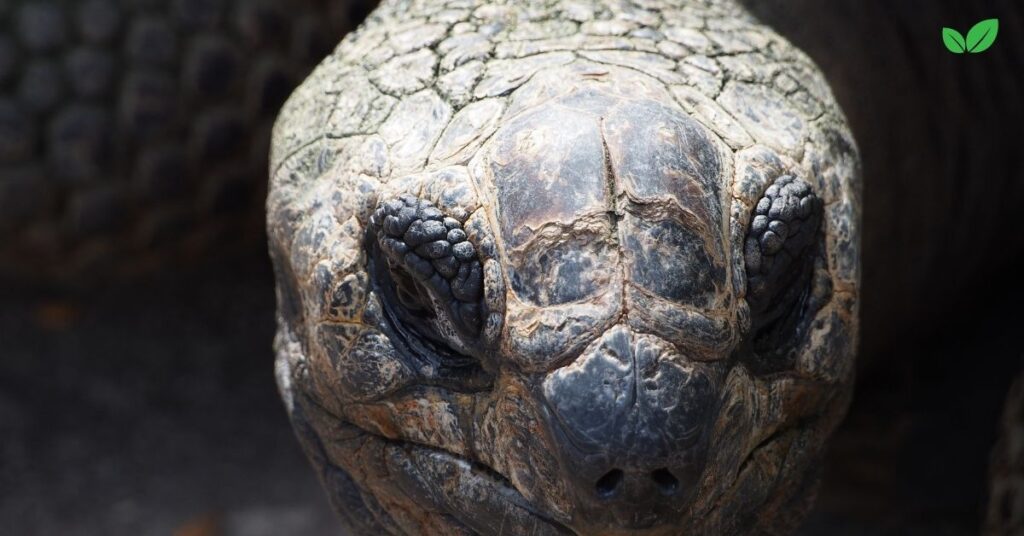
Distinctive Anatomy
- Oversized Head: The turtle’s large triangular head, which is protected by bony plates, is its defining feature. The size and shape are adaptations for feeding on hard-shelled prey like mollusks.
- Carapace: Its shell is relatively flat and measures around 15–18 cm (6–7 inches) in length. The flattened shell aids in maneuvering through rocky crevices.
- Tail: The tail is longer than its body and highly muscular, providing stability in turbulent waters.
- Limbs: Equipped with strong, sharp claws and partially webbed toes, the turtle is a proficient climber and swimmer.
Non-Retraction of the Head
Unlike most turtles, the big headed turtle cannot retract its head into its shell due to its size. This limitation is compensated by the bony plates on its skull, which offer significant protection from predators.
Habitat and Distribution
The big headed turtle is a highly specialized species, thriving in environments that meet its strict requirements for survival. It is typically found in Southeast Asia, including regions of China, Vietnam, Laos, Myanmar, and Thailand.
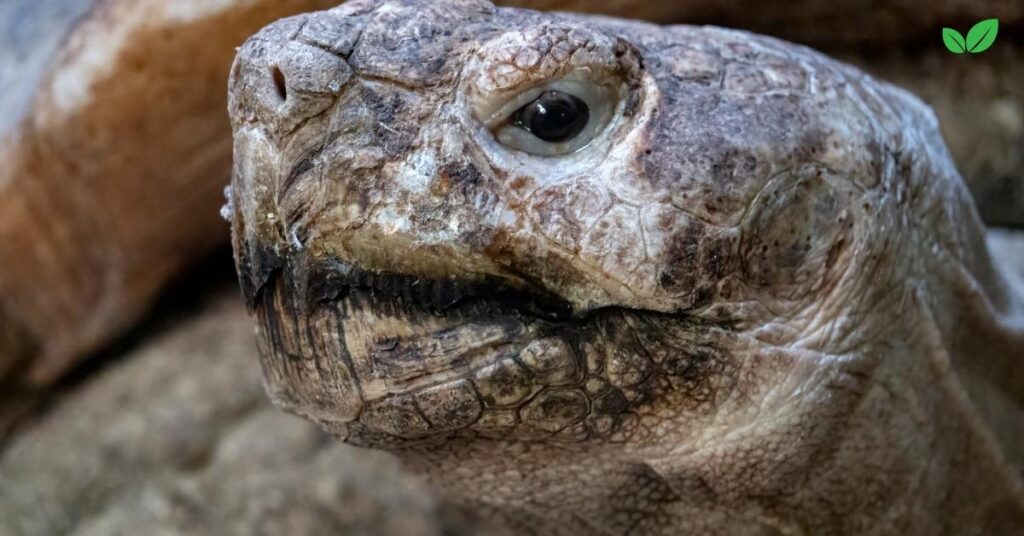
Preferred Habitat
Big headed turtles are highly dependent on clear, fast-flowing streams in mountainous forests. These streams are characterized by:
- Cool Temperatures: They require cool, oxygen-rich water, which supports both the turtle and its prey.
- Rocky Substrates: Rocky riverbeds offer ideal hiding spots, foraging areas, and nesting grounds.
- Dense Forest Cover: Surrounding vegetation provides shade, maintaining lower water temperatures and preventing sediment runoff.
Geographical Range
Their range is fragmented, often limited to isolated pockets of suitable habitat. These turtles are usually found at elevations of 300–1,500 meters (980–4,920 feet) above sea level. Fragmentation makes populations highly vulnerable to local extinctions due to habitat degradation or human activities.
Diet and Foraging Behavior
The big headed turtle is a carnivore with a diet and feeding behavior adapted to its specialized habitat.
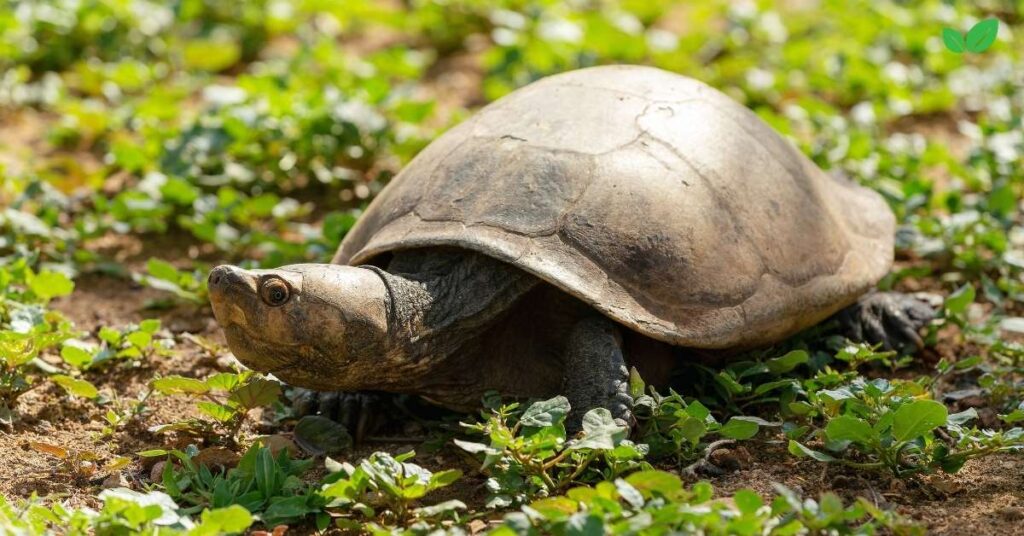
Diet
- Aquatic Invertebrates: The primary food sources include snails, mollusks, crustaceans, and insect larvae. The turtle’s powerful jaws enable it to crush hard shells.
- Fish: Small fish, captured through ambush tactics, are another staple.
- Amphibians: Tadpoles and juvenile frogs are occasional prey.
- Carrion: As scavengers, these turtles contribute to ecosystem health by consuming decaying matter.
Foraging Behavior
Big-headed turtles are primarily nocturnal, foraging under the cover of darkness to avoid predators and competition. They are ambush predators, relying on stealth and their large jaws to capture unsuspecting prey. During the day, they rest in crevices or under rocks to conserve energy and avoid detection.
Behavior and Adaptations
The big-headed turtle exhibits a range of behaviors and adaptations that allow it to survive in its challenging aquatic environment.

Nocturnal Activity
The turtle is most active at night, foraging in the stream bed. This nocturnal behavior reduces competition with other diurnal species and minimizes predation risks.
Climbing Ability
Surprisingly, the big headed turtle is an excellent climber. Its sharp claws and strong tail allow it to scale rocky riverbanks and low-hanging vegetation, a skill that helps it escape predators or navigate its environment.
Breathing Adaptations
Adapted to life in oxygen-rich water, the turtle can remain submerged for extended periods, using its efficient respiratory system to extract oxygen.
Defense Mechanisms
- Bony Skull: Since it cannot retract its head, the turtle relies on its robust skull for protection.
- Tail and Limbs: In defense, it uses its tail and claws to fight off predators.
- Cryptic Behavior: It spends much of its time hiding under rocks or in crevices, avoiding detection.
Ecological Role
The big headed turtle plays a critical role in maintaining the balance of the ecosystems it inhabits.
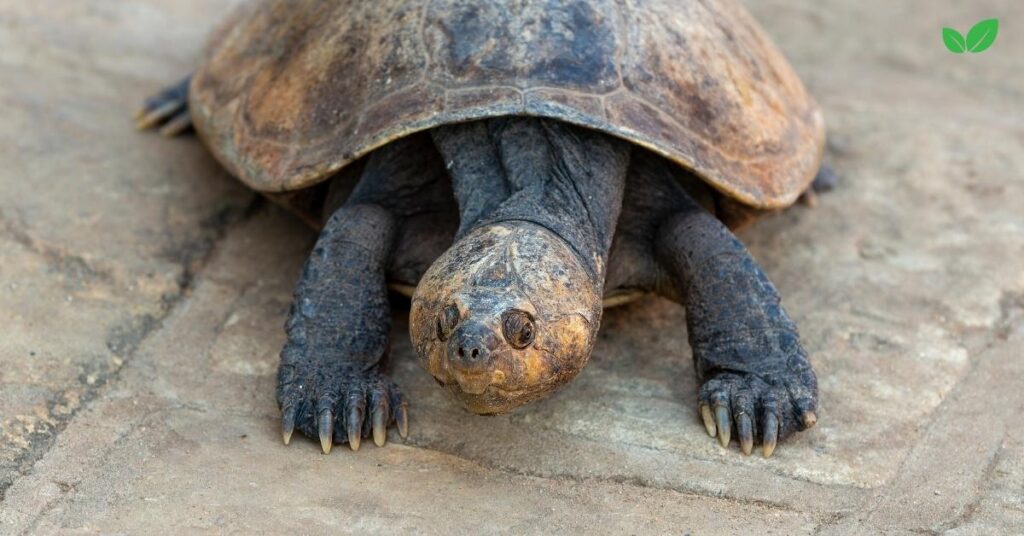
Predator and Prey
- As a Predator: By feeding on invertebrates, fish, and amphibians, the turtle helps regulate these populations, preventing overpopulation and maintaining ecological balance.
- As Prey: Juveniles are preyed upon by larger aquatic predators, birds, and mammals, linking them to higher trophic levels in the food web.
Scavenger
By consuming carrion, the turtle aids in nutrient recycling, breaking down organic material and returning essential nutrients to the ecosystem.
Indicator Species
Because of its reliance on clean, oxygen-rich water, the presence of the big headed turtle is a sign of a healthy aquatic environment. Its absence may indicate pollution or habitat degradation, making it a valuable indicator species for conservationists.
Threats to the Big Headed Turtle
Despite its ecological importance, the big headed turtle faces a growing number of threats that jeopardize its survival.
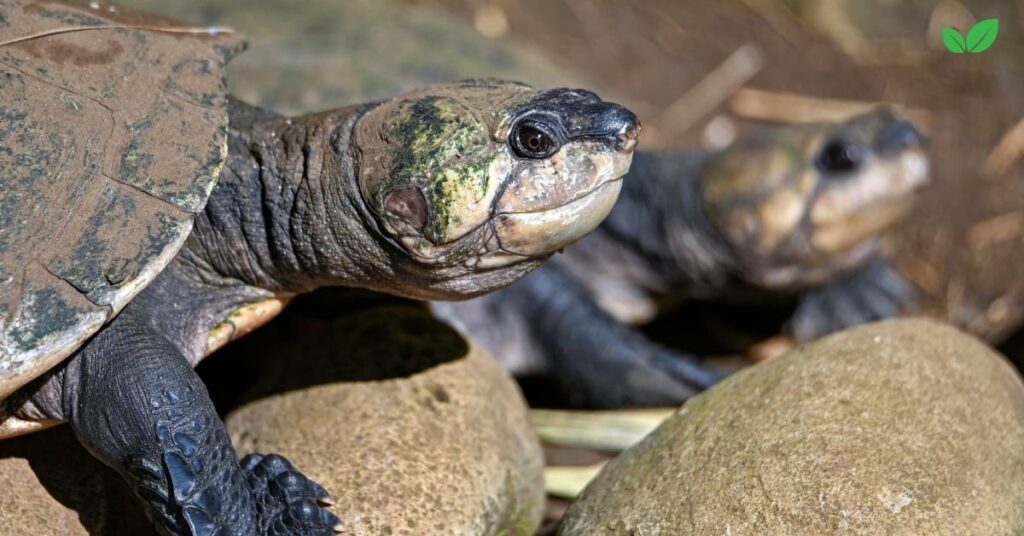
Habitat Loss
Deforestation and agricultural expansion have devastated the forests surrounding the turtle’s streams, leading to increased sedimentation, reduced water quality, and loss of habitat. Infrastructure projects, such as dam construction, disrupt water flow and oxygen levels, making streams unsuitable for the turtle.
Pollution
Agricultural runoff introduces pesticides and fertilizers into streams, while industrial activities contribute heavy metals and toxins. These pollutants poison the turtles and their prey, drastically reducing populations.
Illegal Wildlife Trade
The big-headed turtle is highly sought after for the exotic pet trade and traditional medicine. Overharvesting has decimated wild populations, particularly in regions where enforcement is weak.
Climate Change
Rising global temperatures and altered rainfall patterns threaten the cool, oxygen-rich streams that are essential for the turtle’s survival. Changes in water availability and quality could lead to further population declines.
Predation and Competition
Juvenile turtles are vulnerable to predators, while invasive species, such as non-native fish, compete for food resources.
Conservation Efforts
Efforts to protect the big headed turtle have focused on habitat preservation, captive breeding, and legal enforcement.
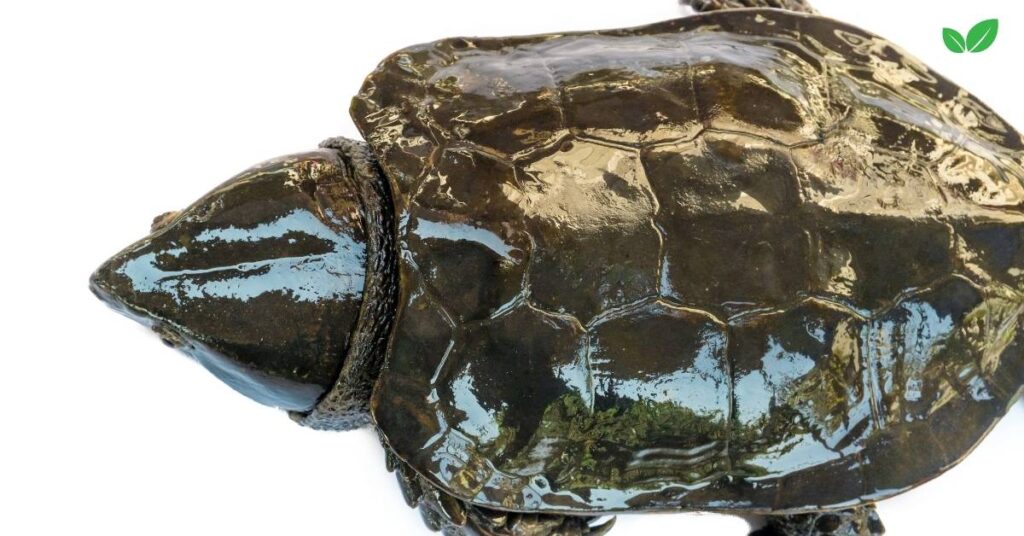
Habitat Preservation
- Protected Areas: Designating reserves and national parks ensures that critical habitats remain undisturbed.
- Reforestation: Restoring forest cover around streams reduces sedimentation and stabilizes water temperatures.
Captive Breeding Programs
Conservation organizations and zoos have established breeding programs to support population recovery and facilitate reintroduction into the wild.
Legal Protections
- International Agreements: The big headed turtle is listed under Appendix I of CITES, prohibiting international trade.
- National Laws: Many countries within its range have enacted laws protecting the species, although enforcement remains a challenge.
Community Engagement
Raising awareness about the turtle’s ecological value helps reduce poaching and encourages local communities to participate in conservation efforts.
The Role of Science and Education
Scientific research and public education are critical for understanding and conserving the big headed turtle.
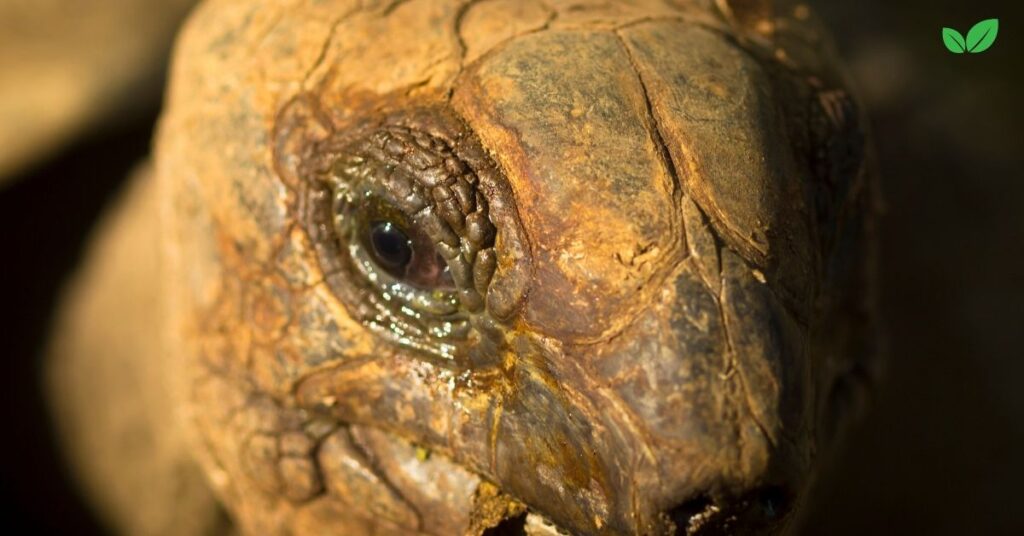
Research
Studies on the turtle’s behavior, genetics, and habitat needs provide valuable data for developing effective conservation strategies. Monitoring population trends and the impact of threats like pollution and climate change is essential for long-term survival.
Education
Educational campaigns aimed at local communities and the global public emphasize the importance of the big headed turtle. By fostering appreciation for this species, such initiatives can reduce demand in the illegal wildlife trade and promote sustainable practices.
Conclusion
The big headed turtle (Platysternon megacephalum) is a remarkable species that exemplifies the intricate relationships within freshwater ecosystems. Its unique adaptations, from its large head to its nocturnal habits, highlight the diversity of life and the importance of protecting specialized species.
However, the turtle’s survival is increasingly at risk due to habitat destruction, pollution, illegal trade, and climate change. Conservation efforts must prioritize habitat preservation, enforcement of legal protections, and community involvement to ensure the survival of this ecological sentinel.
By protecting the big-headed turtle, we not only save a unique evolutionary marvel but also preserve the health and balance of the ecosystems it inhabits. Its story is a powerful reminder of the interconnectedness of life and the urgent need to safeguard our planet’s biodiversity.
Read More: Florida Box Turtle: The Remarkable Story of Nature’s Slow Traveler

